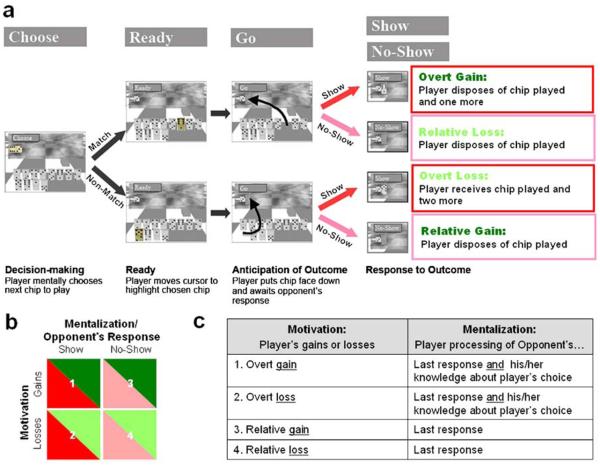Fig. 1.
Domino game paradigm. Panel a depicts the domino game sequence and corresponding consequences. In the beginning of each game round the player (participant scanned) must decide what chip he/she will play next (decision-making interval) and move the cursor to this chip when instructed (ready interval). The chip can either match the opponent's chip (i.e. have one of the numbers match those on the opponent's chip, 6:3 in this example; upper panel, 6:1) or not (lower panel, 5:2). After placing the selected chip face down next to the opponent's chip, he/she awaits the opponent's response (anticipation of outcome interval). The opponent can either challenge the player's choice (‘show’; red arrows) or not (‘no-show’; pink arrows). Based on the player's choice and the opponent's response there are four possible consequences for each round (response to outcome interval): show match (overt gain); no-show match (relative loss, as the player could have been rewarded if challenged); show non-match (overt loss) and no-show non-match (relative gain, as the player could have been punished if challenged). Note: colors of boxes/wording correspond to panel b color schemes. Panel b outlines the ANOVA design for the response to outcome interval analyses. Red tones correspond to mentalization/opponent's response effect and green to motivation. Panel c describes the suggested mentalization and motivation mechanism of each event. The opponent's chip and samples of matching and non-matching chips are highlighted for demonstration purposes only. In the actual scan the game board and all chips are colored. Also all chips are the same size and color

